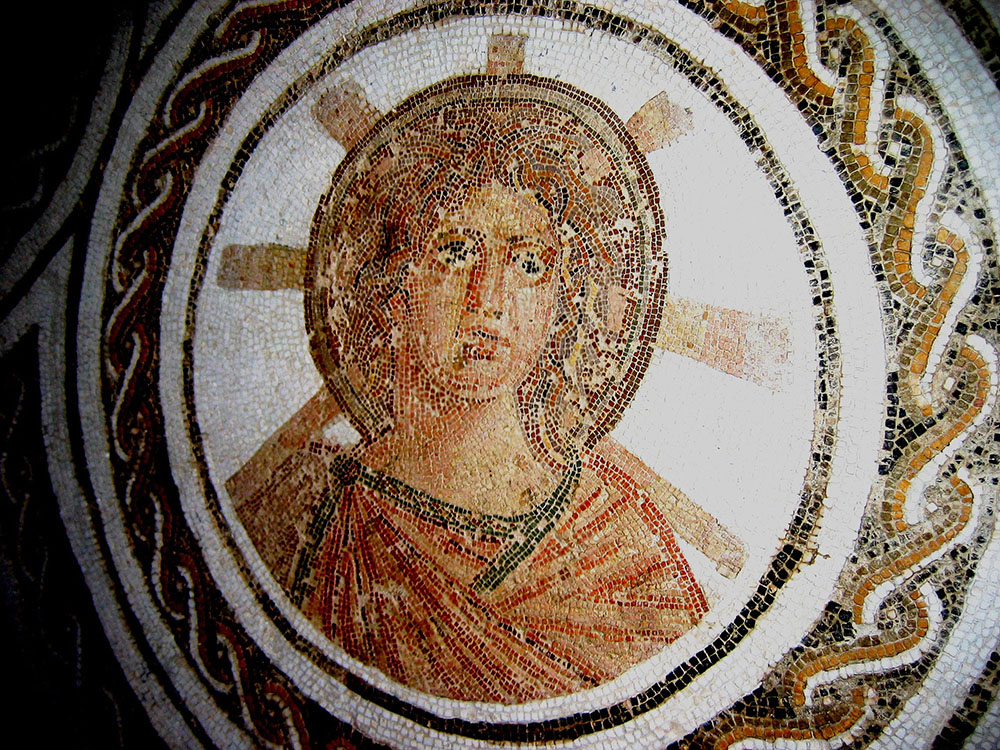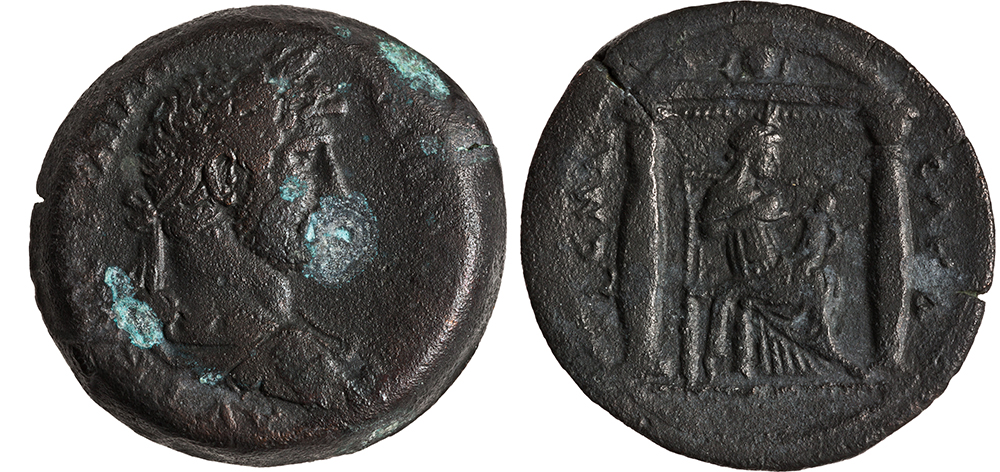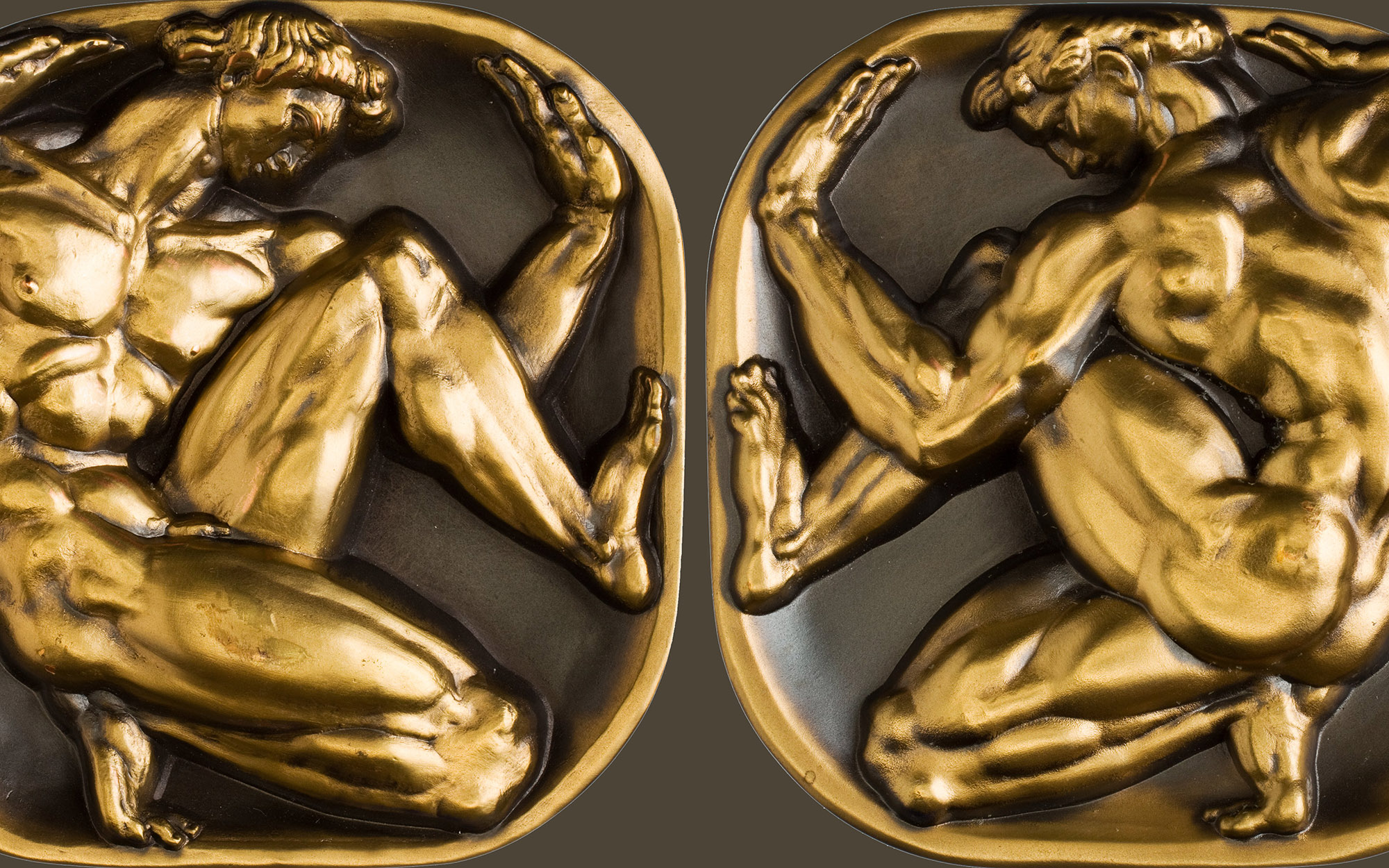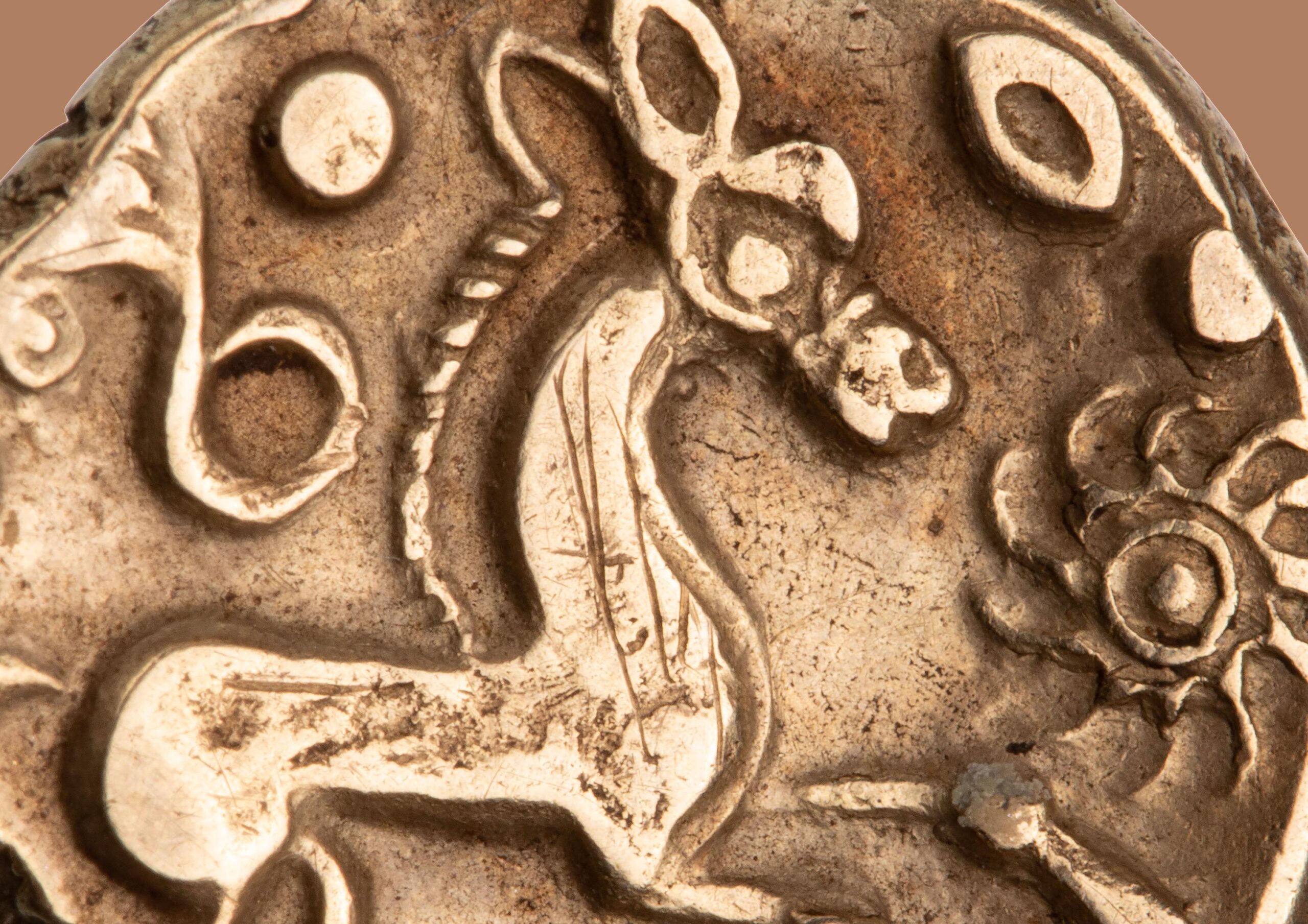Syncretism in Early Christian Art and Coinage
We refer to the period between Thanksgiving and New Year as the holiday season. In addition to a concentration of celebrations in this short period, there is also diversity among the significant religious holidays in December: Jews celebrate Hannukah and Christians have Christmas, which is also widely popular as a secular celebration. Both religious and secular observances of Christmas provide excellent examples of syncretism. Syncretism is the natural or deliberate merging of practices, ideas, traditions, etc., especially as regards religious subjects. When investigating Christian art and traditions, we find a great deal of syncretism, as we do with most other world religions. Syncretism in art can be either an intentional process or an effect of an attempt to visualize ideas that have no pre-existing visual language of their own.
Students in art history survey courses learn that the earliest images of Jesus in the Roman world depict him as the Good Shepherd (e.g., Figs. 1 and 2), which of course relates to Jesus’s own description of himself as the Good Shepherd (e.g., John 10:11, 14). But those early depictions of Jesus also closely resemble images and statues of ram-bearers carrying the sacrificial animal or of Orpheus, whose cult was very popular at the time that Christianity was spreading and whose story had some parallels with Jesus’s life.


Art history students also learn that the emphasis on wine and wine-making motifs in early Christian art (e.g., Fig. 3) was hardly distinguishable from contemporary scenes in Graeco-Roman art associated with Dionysus, who was also popularly worshipped and who also offered life and rebirth to his adherents. Dionysus, too, had some similarities with Jesus’s story and was also known for turning water into wine. And, of course, art historians recognize the frontal images and icons depicting Jesus with the halo behind his head (e.g., Figs. 2 and 4) as drawing upon representations of Sol Invictus (The Unconquerable Sun) and Apollo. Sol was depicted with a radiate crown or sun disc behind his head, and this attribute was sometimes also deployed in representations of Apollo (e.g., Fig. 5).



Even on coins we can compare the earliest numismatic depictions of Jesus on coins of the Byzantine emperor Justinian II (Fig. 6) with any number of coins from the Greek and Roman worlds depicting frontal, radiate views of Sol or Apollo, including the well-known coins of Rhodes that feature Helios (the Greek equivalent to Sol) on their obverses (Fig. 7). In fact, some church communities collected ancient coins of Rhodes and kept them as relics of the 30 pieces of silver paid to Judas. Although it is a historical impossibility that these coin types were the “blood money” paid to Judas to betray Jesus, they may have been attractive candidates for the 30 pieces of silver among Christian relic collectors, because these later Christian viewers may have mistaken the visage of Helios for Christ (on this topic, see, for example, Haim Gitler’s research).


Early Christians also soon developed the iconography of the Virgin Mary with the Christ child (e.g., Fig. 8). Here too, such images have their origins in the broader cultural and religious contexts of the Mediterranean world. Images of Isis with the infant Horus were popular in Egypt and popularized across the Mediterranean through the diffusion of Egyptian cults (Fig. 9). Cleopatra also styled herself as Isis and portrayed herself similarly with the infant Caesarion, her son with Julius Caesar, on coins struck in Cyprus (Fig. 10). And Roman coins struck at Alexandria depicted Isis with Harpocrates, a Greek god adapted from representations of Horus as infant, on her lap (Fig. 11).




The Roman emperor Constantine, the first Christian to rule the empire, set December 25 as Christmas three centuries after Jesus’s birth. Constantine had been an avid dedicant to the worship of Sol Invictus prior to his conversion to Christianity, and, so, it is no coincidence that he assigned Jesus’s birthday to December 25, the same as that of Sol Invictus and the winter solstice. As the worship of Sol Invictus was one of the most popular cults at the time, Constantine’s placing the celebration of Jesus’s nativity on the same date as the Sol’s birthday was perhaps part of his broader agenda of promoting the burgeoning Christian religion as a way to unite the Roman Empire under a new religion after decades of divided rule and conflict, essentially replacing the Sol with Christ.
At the same time Constantine syncretized Sol and Jesus’s birthdays, Christmas also coincided with the popular Roman feast of Saturn—the Saturnalia. Among other things, this very old Roman celebration consisted of merriment, the exchange of gifts, placing wreaths, and a spirit of kindness and generosity. A common gift during the Saturnalia was fruit cake. If all of these things sound familiar, they should; vestiges of the Saturnalia endure in our modern celebrations of Christmas and the holiday season more generally. In theological terms, Easter (or Pascha) is the most important Christian religious celebration, but it is Christmas that still gets the popular attention, perhaps owing in part to the Saturnalia’s own overriding popularity thousands of years ago on account of the emphasis on merrymaking.
Christianity arose in the culturally rich and religiously diverse world of the Roman Empire. The first Christians did not begin their lives as Christians but were converts familiar with a multitude of other gods, ideas, and traditions—the religious landscape in the Roman Empire offered far more variety than the modern world. As we know, art and traditions never develop in a vacuum and those first Christians drew upon the visual world and the ideas they were familiar with, whether they had been followers of Dionysus, Orpheus, or Sol Invictus, and so on. The first generation of Christians, who grew up in a world incredibly foreign to our own, adapted an existing visual language and innovated upon it to create what would become Christian art, and eventually began to codify Christian theology and traditions in similar ways. By attending to how our modern ideas and visual languages are anchored in the ancient world, we can appreciate the diversity of cultures, ethnicities, and religions in the ancient world, connecting all of us in the richest of ways to our forebearers millennia ago.




